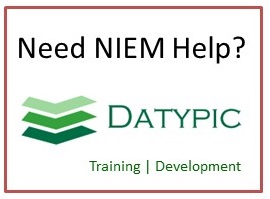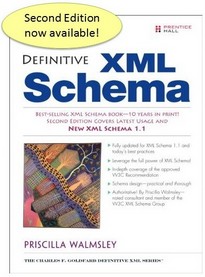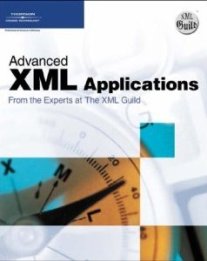geo:LocationFeature
A GML feature that describes a location.
Element information
Namespace: http://release.niem.gov/niem/adapters/geospatial/3.0/
Schema document: adapters/geospatial/3.0/geospatial.xsd
Type: geo:FeatureType
Properties: Global, Qualified, Nillable
Content
- Sequence [1..1]
- structures:ObjectAugmentationPointAbstract [0..*]An augmentation point for ObjectType
- Choice [1..1]
- gml:MultiPointCoverageIn a gml:MultiPointCoverage the domain set is a gml:MultiPoint, that is a collection of arbitrarily distributed geometric points. The content model is identical with gml:DiscreteCoverageType, but that gml:domainSet shall have values gml:MultiPoint. In a gml:MultiPointCoverage the mapping from the domain to the range is straightforward. - For gml:DataBlock encodings the points of the gml:MultiPoint are mapped in document order to the tuples of the data block. - For gml:CompositeValue encodings the points of the gml:MultiPoint are mapped to the members of the composite value in document order. - For gml:File encodings the points of the gml:MultiPoint are mapped to the records of the file in sequential order.
- gml:MultiCurveCoverageIn a gml:MultiCurveCoverage the domain is partioned into a collection of curves comprising a gml:MultiCurve. The coverage function then maps each curve in the collection to a value in the range set. The content model is identical with gml:DiscreteCoverageType, but that gml:domainSet shall have values gml:MultiCurve. In a gml:MultiCurveCoverage the mapping from the domain to the range is straightforward. - For gml:DataBlock encodings the curves of the gml:MultiCurve are mapped in document order to the tuples of the data block. - For gml:CompositeValue encodings the curves of the gml:MultiCurve are mapped to the members of the composite value in document order. - For gml:File encodings the curves of the gml:MultiCurve are mapped to the records of the file in sequential order.
- gml:MultiSurfaceCoverageIn a gml:MultiSurfaceCoverage the domain is partioned into a collection of surfaces comprising a gml:MultiSurface. The coverage function than maps each surface in the collection to a value in the range set. The content model is identical with gml:DiscreteCoverageType, but that gml:domainSet shall have values gml:MultiSurface. In a gml:MultiSurfaceCoverage the mapping from the domain to the range is straightforward. - For gml:DataBlock encodings the surfaces of the gml:MultiSurface are mapped in document order to the tuples of the data block. - For gml:CompositeValue encodings the surfaces of the gml:MultiSurface are mapped to the members of the composite value in document order. - For gml:File encodings the surfaces of the gml:MultiSurface are mapped to the records of the file in sequential order.
- gml:MultiSolidCoverageIn a gml:MultiSolidCoverage the domain is partioned into a collection of solids comprising a gml:MultiSolid. The coverage function than maps each solid in the collection to a value in the range set. The content model is identical with gml:DiscreteCoverageType, but that gml:domainSet shall have values gml:MultiSolid. In a gml:MultiSolidCoverage the mapping from the domain to the range is straightforward. - For gml:DataBlock encodings the solids of the gml:MultiSolid are mapped in document order to the tuples of the data block. - For gml:CompositeValue encodings the solids of the gml:MultiSolid are mapped to the members of the composite value in document order. - For gml:File encodings the solids of the gml:MultiSolid are mapped to the records of the file in sequential order.
- gml:GridCoverageA gml:GriddedCoverage is a discrete point coverage in which the domain set is a geometric grid of points. Note that this is the same as the gml:MultiPointCoverage except that we have a gml:Grid to describe the domain. The simple gridded coverage is not geometrically referenced and hence no geometric positions are assignable to the points in the grid. Such geometric positioning is introduced in the gml:RectifiedGridCoverage.
- gml:RectifiedGridCoverageThe gml:RectifiedGridCoverage is a discrete point coverage based on a rectified grid. It is similar to the grid coverage except that the points of the grid are geometrically referenced. The rectified grid coverage has a domain that is a gml:RectifiedGrid geometry.
- gml:FeatureCollection
- gml:DynamicFeatureStates are captured by time-stamped instances of a feature. The content model extends the standard gml:AbstractFeatureType with the gml:dynamicProperties model group. Each time-stamped instance represents a 'snapshot' of a feature. The dynamic feature classes will normally be extended to suit particular applications. A dynamic feature bears either a time stamp or a history.
- gml:DynamicFeatureCollectionA gml:DynamicFeatureCollection is a feature collection that has a gml:validTime property (i.e. is a snapshot of the feature collection) or which has a gml:history property that contains one or more gml:AbstractTimeSlices each of which contain values of the time varying properties of the feature collection. Note that the gml:DynamicFeatureCollection may be one of the following: 1. A feature collection which consists of static feature members (members do not change in time) but which has properties of the collection object as a whole that do change in time . 2. A feature collection which consists of dynamic feature members (the members are gml:DynamicFeatures) but which also has properties of the collection as a whole that vary in time.
- gml:ObservationThe content model is a straightforward extension of gml:AbstractFeatureType; it automatically has the gml:identifier, gml:description, gml:descriptionReference, gml:name, and gml:boundedBy properties. The gml:validTime element describes the time of the observation. Note that this may be a time instant or a time period. The gml:using property contains or references a description of a sensor, instrument or procedure used for the observation. The gml:target property contains or references the specimen, region or station which is the object of the observation. This property is particularly useful for remote observations, such as photographs, where a generic location property might apply to the location of the camera or the location of the field of view, and thus may be ambiguous. The gml:subject element is provided as a convenient synonym for gml:target. This is the term commonly used in phtotography. The gml:resultOf property indicates the result of the observation. The value may be inline, or a reference to a value elsewhere.
- gml:DirectedObservationA gml:DirectedObservation is the same as an observation except that it adds an additional gml:direction property. This is the direction in which the observation was acquired. Clearly this applies only to certain types of observations such as visual observations by people, or observations obtained from terrestrial cameras.
- gml:DirectedObservationAtDistancegml:DirectedObservationAtDistance adds an additional distance property. This is the distance from the observer to the subject of the observation. Clearly this applies only to certain types of observations such as visual observations by people, or observations obtained from terrestrial cameras.
from subst. group gml:AbstractFeaturefrom subst. group gml:AbstractDiscreteCoveragefrom subst. group gml:DynamicFeaturefrom subst. group gml:Observationfrom subst. group gml:DirectedObservation
from type structures:ObjectTypefrom subst. group structures:ObjectAugmentationPoint
Attributes
| Name | Occ | Type | Description | Notes |
|---|---|---|---|---|
| structures:id | [0..1] | xsd:ID | from type structures:ObjectType | |
| structures:ref | [0..1] | xsd:IDREF | from type structures:ObjectType | |
| structures:metadata | [0..1] | xsd:IDREFS | from type structures:ObjectType | |
| structures:relationshipMetadata | [0..1] | xsd:IDREFS | from type structures:ObjectType | |
| Any attribute | [0..*] | Namespace: urn:us:gov:ic:ism urn:us:gov:ic:ntk, Process Contents: lax | from type structures:ObjectType |
Used in
- Type biom:CaptureLocationType via extension of nc:LocationType (Element biom:CaptureLocation)
- Type em:AlertAffectedLocationType via extension of nc:LocationType (Element em:AlertAffectedLocation)
- Type em:NotificationTargetLocationType via extension of nc:LocationType (Element em:NotificationTargetLocation)
- Type it:GoodsLocationType via extension of nc:LocationType (Element it:GoodsLocationText)
- Type it:GoodsOriginType via extension of nc:LocationType (Element it:CountryOfOrigin)
- Type it:LoadingLocationType via extension of nc:LocationType (Element it:LoadingLocation)
- Type it:TranshipmentLocationType via extension of nc:LocationType (Element it:TranshipmentLocation)
- Type it:UnloadingLocationType via extension of nc:LocationType (Element it:UnloadingLocation)
- Type nc:LocationType (Elements cyfs:AdoptionLocation, cyfs:PlacementOtherLocation, em:AlarmEventLocation, em:AlarmLocation, em:ArrivalLocation, em:ResourceCurrentLocation, em:ResourceDepartureLocation ...more)
Substitution hierarchy
- nc:LocationAugmentationPoint
- can be substituted with geo:LocationFeature
Sample instance
<geo:LocationFeature> <structures:ObjectAugmentationPoint>any content</structures:ObjectAugmentationPoint> <gml:MultiPointCoverage gml:id="ID"> <gml:metaDataProperty> <gml:GenericMetaData>Any text, intermingled with: <!--any element--> </gml:GenericMetaData> </gml:metaDataProperty> <gml:description>string</gml:description> <gml:descriptionReference/> <gml:identifier codeSpace="http://www.example.com/">string</gml:identifier> <gml:name>string</gml:name> <gml:boundedBy> <gml:Envelope>... </gml:Envelope> </gml:boundedBy> <gml:location> <gml:MultiGeometry gml:id="ID">... </gml:MultiGeometry> </gml:location> <gml:domainSet> <gml:MultiGeometry gml:id="ID">... </gml:MultiGeometry> </gml:domainSet> <gml:rangeSet> <gml:ValueArray gml:id="ID" uom="">... </gml:ValueArray> </gml:rangeSet> <gml:coverageFunction> <gml:MappingRule>string</gml:MappingRule> </gml:coverageFunction> </gml:MultiPointCoverage> </geo:LocationFeature>



